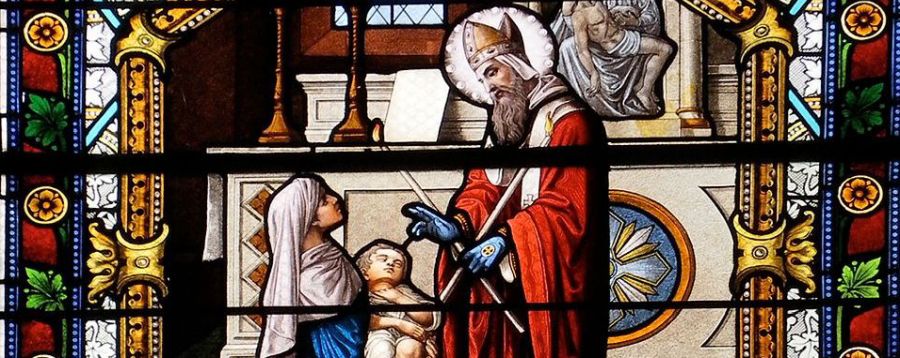
Many Catholics would have had their throats blessed every year on the Feast of St. Blaise, which ordinarily falls on the 3rd of February. But, still we may not have really understood why the Roman Catholic Church has this ritual of blessing of throats. It is considered as a sacramental of the Catholic Church. This sacramental is being also celebrated in some of the Eastern Catholic Churches and in some Anglican denominations.
St. Blaise was martyred in Sebaste in ancient Armenia (which is modern day Turkey) in 316. Certain accounts that were circulated about 400 years later have depicted him as a successful physician in Armenia. His amazing healing skills and his prayerfulness being a hermit led him to be named as a bishop that most Christians admired. Being a spiritual person who had great faith and a physician, he encouraged the spiritual and physical health of his people.
In 313 Emperor Constantine ended the state persecution of Christians by the Edit (Rescript) of Toleration, which granted the freedom of worship in the Roman Empire. By granting the Church official toleration, Emperor Constantine started a process that led Christianity to become the official religion of the empire. But, although the freedom of worship is granted in the Roman Empire for Christians, persecution of Christians was still common throughout Armenia.
In that intolerable atmosphere of oppression and persecution, St. Blaise felt a call to live in seclusion. He fled to mountains where he lived as a hermit, making friends with wild animals. A group of hunters, who were seeking wild animals, found St. Blaise hiding in a cave. Those hunters were astounded to find a bishop kneeling in prayer surrounded by calm and gentle wild animals. And yet, while they were taking St. Blaise into a prison, he was approached by a woman whose child had a fish bone stuck in his throat and near death. She begged for his healing help. By placing his hands on the child’s neck and by praying over him, the bone dislodged and the child was able to cough up the bone. This astonished all those who witnessed it. There are many other miracles that were attributed to him.
Later, the governor of Cappadocia tried to persuade St. Blaise to sacrifice to pagan idols. When St. Blaise refused to do it, he was hung from a tree and tortured. Eventually he was beheaded. Today, the intercession of St. Blaise has been invoked in the east for illnesses related to the throat This belief has been practice since the sixth century. Then, his reputation as a healer spread throughout Europe by the ninth century. He became one of the most popular saints of the Middle Ages. In the United States the annual blessing of throats has become a sign of the struggle against the disease and illness in the life of the Christians.
On the feast day of St. Blaise or during the weekend when his feast falls, a priest or a deacon or even a lay minister recites the following prayer of blessing, by using two blessed candles tied together to form a cross and placing them over the neck of the faithful.
Through the intercession of Saint Blaise, bishop and martyr, may God deliver you from every disease of the throat and from every other illness: In the name of the Father, and of the Son, + and of the Holy Spirit. Amen.
— Fr. Niranjan Rodrigo, Ph.D.

You must be logged in to post a comment.